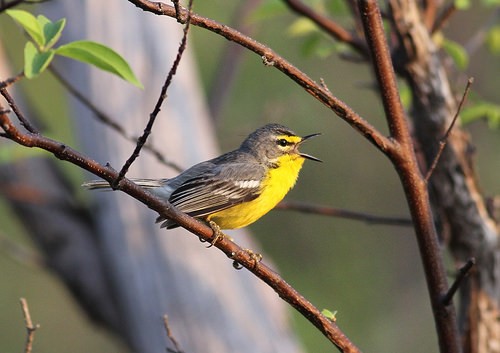Birdfinding.info ⇒ Hard to miss at dry lowland sites such as Guánica and Cambalache State Forests, Cabo Rojo National Wildlife Refuge, and Vieques. Also occurs at most other heavily visited sites on Puerto Rico, but uncommon in wet montane forests. In San Juan, Julio Enrique Monaga National Park is a reliable location.
Adelaide’s Warbler
Setophaga adelaidae
Endemic to Puerto Rico, Vieques, and the Virgin Islands.
Common in forests, woodlands, and scrub across most of Puerto Rico and Vieques, mainly in coastal lowlands, but expanding its presence in the interior, including some mountainous areas. Locally abundant in dry forests, especially in southwestern Puerto Rico.
Has also become common on Culebra, which it apparently colonized around 1990, and on some of its adjacent keys. During the 1990s, researchers also noticed a significant increase on Vieques (Gemmill 2015).
In the Virgin Islands, it has been recorded on St. Thomas since at least 2012, and St. John since at least 2013. Based on recent trends, it seems likely to continue colonizing the Virgin Islands.
Identification
Distinctive within its range: gray above, yellow below, with two white wingbars, a short yellow eyebrow, and white crescent under the eye. Bold and inquisitive, often landing on vehicles.
Potentially confused with several North American migrants—such as Yellow-throated Warbler and immature plumages of Prairie and Canada Warblers and Northern Parula, all of which can convey a similar impression, though each lacks at least one of Adelaide’s’ basic field marks.
Nearly identical to St. Lucia Warbler and also very similar to Barbuda Warbler, both formerly classified as isolated subspecies of Adelaide’s. They are not known to have occurred together post-speciation, so they are currently separable based on location, but ongoing range expansion or vagrancy at some point could make geography insufficient for identification.
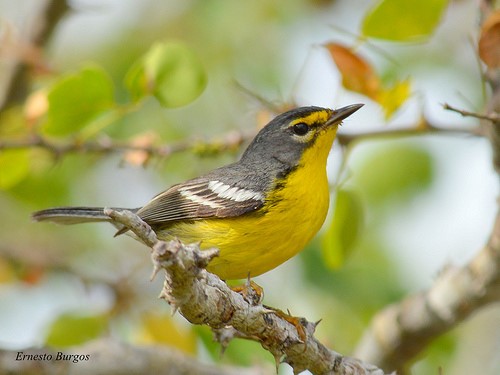
Adelaide’s Warbler. (Cabo Rojo National Wildlife Refuge, Puerto Rico; March 2, 2013.) © Ernesto Burgos
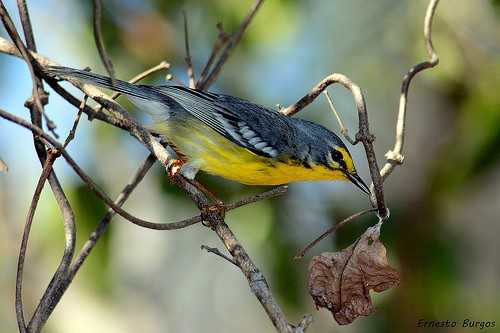
Adelaide’s Warbler, male with typical white undereye crescent. (Cabo Rojo National Wildlife Refuge, Puerto Rico; February 23, 2014.) © Ernesto Burgos
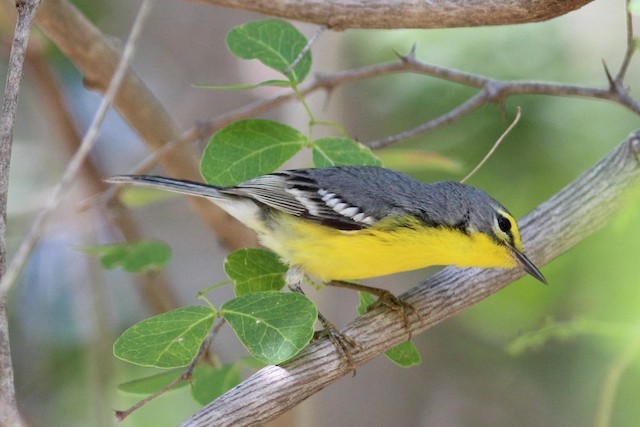
Adelaide’s Warbler, male with typical white undereye crescent. (Guánica State Forest, Puerto Rico; March 22, 2012.) © Alan Selin
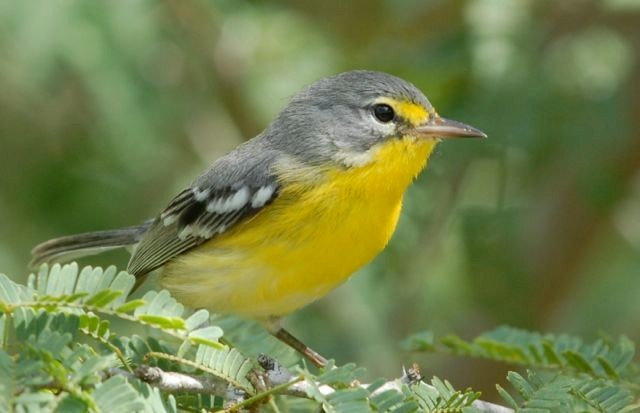
Adelaide’s Warbler, juvenile or molting female. (Monte Pirata, Vieques; 2007.) © Daphne Gemmill
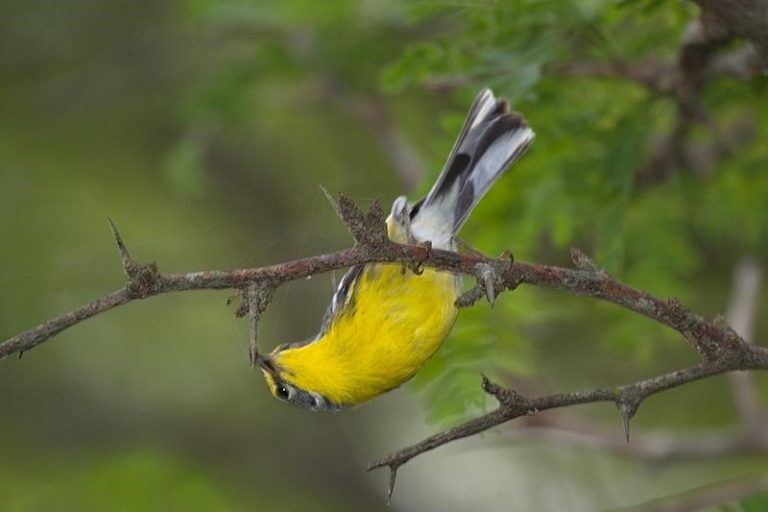
Adelaide’s Warbler, showing white undertail. (Laguna Cartagena National Wildlife Refuge, Puerto Rico; May 17, 2009.) © Kristof Zyskowski
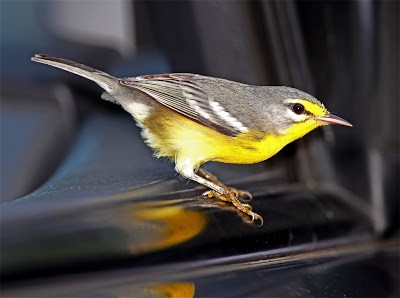
Adelaide’s Warbler, perched beside car window. (November 2013.) © David McDonald
Male seems consistently drawn to car windows, polished clear coats, and rear-view mirrors, wherein it presumably perceives its own reflection as an intruder in its territory.
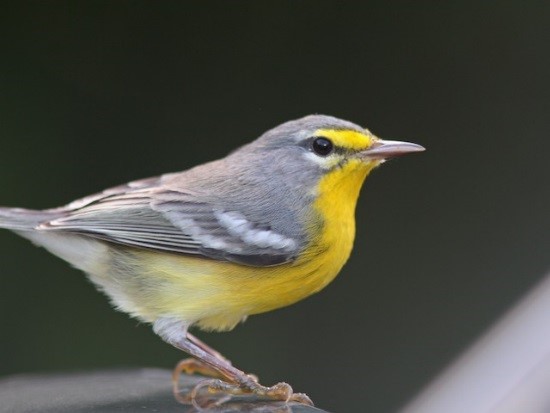
Adelaide’s Warbler, perched on car roof. (Ceiba, Puerto Rico; December 2, 2016.) © Larry Therrien
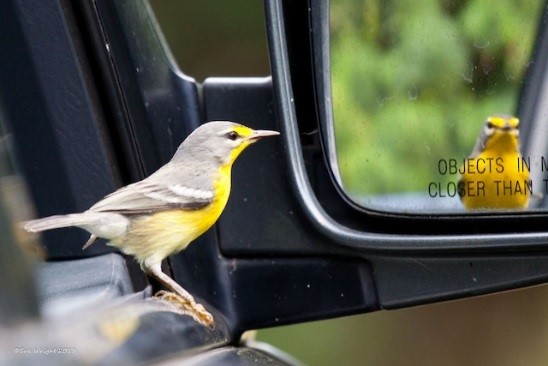
Adelaide’s Warbler: “Objects in Mirror Are Closer Than They Appear.” (Ceiba, Puerto Rico; January 8, 2014.) © Sue Wright
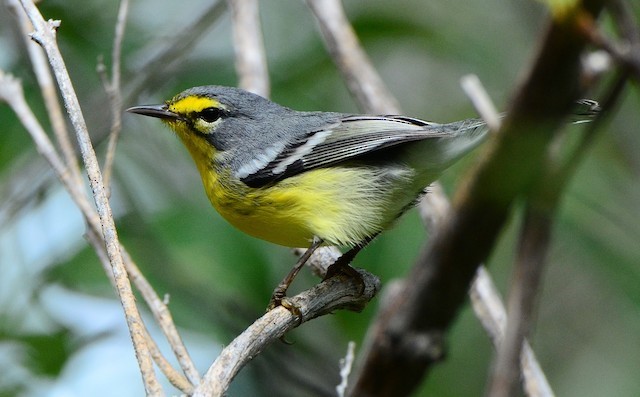
Adelaide’s Warbler, male with typical white undereye crescent. (Guánica State Forest, Puerto Rico; December 5, 2016.) © Steve Tucker
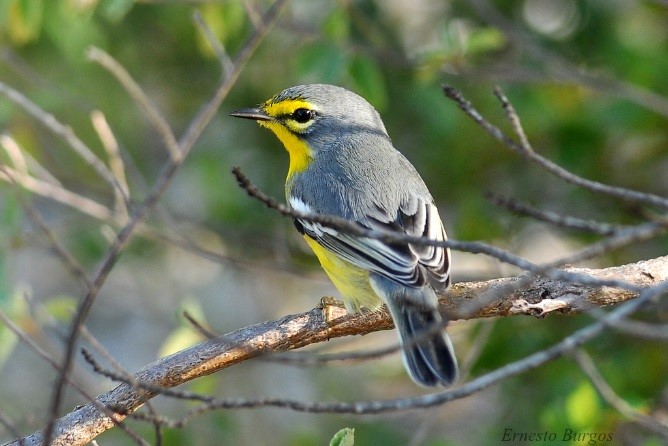
Adelaide’s Warbler, with yellow in undereye crescent. (Guánica State Forest, Puerto Rico; February 7, 2009.) © Ernesto Burgos
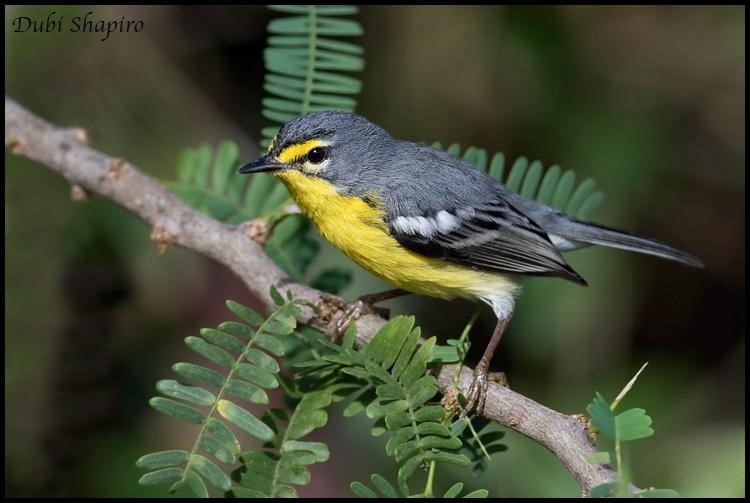
Adelaide’s Warbler, male with typical white undereye crescent. (February 16, 2015.) © Dubi Shapiro
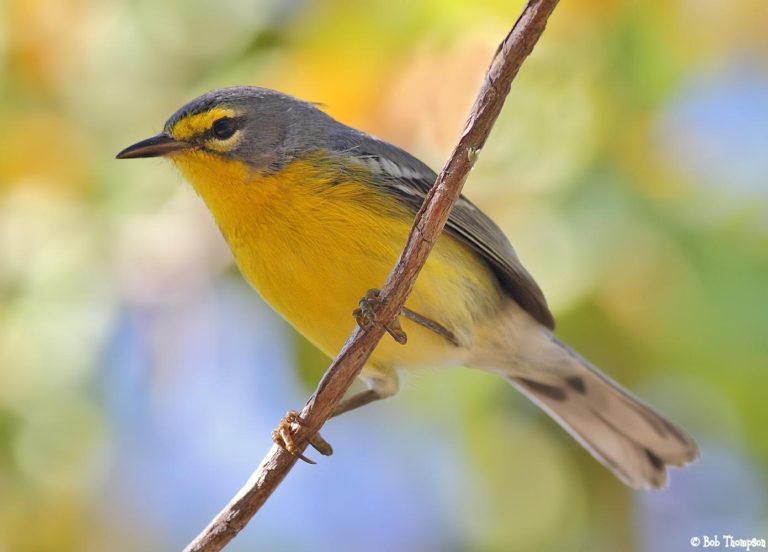
Adelaide’s Warbler, with yellow undereye crescent, and showing white undertail. (Guánica State Forest, Puerto Rico; January 12, 2010.) © Bob Thompson
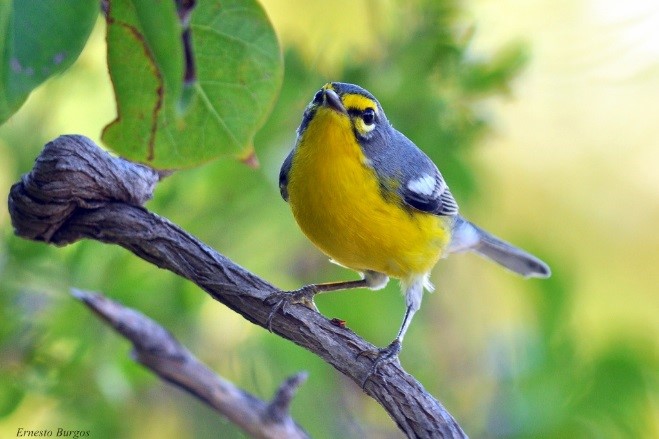
Adelaide’s Warbler, male with typical white undereye crescent. (Guánica State Forest, Puerto Rico; February 7, 2009.) © Ernesto Burgos
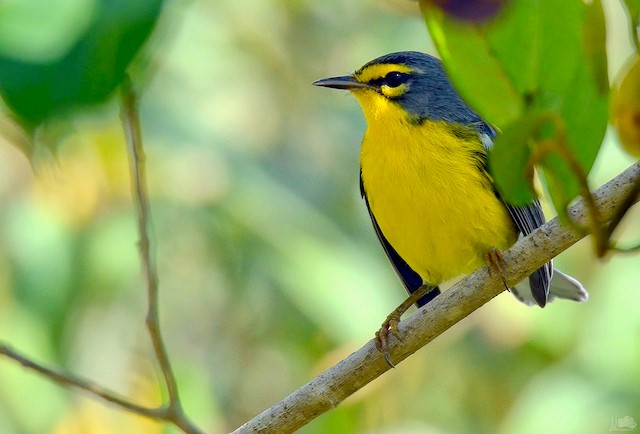
Adelaide’s Warbler, male with a bright yellow undereye crescent. (Bajura, Puerto Rico; October 23, 2015.) © Julian Ortiz
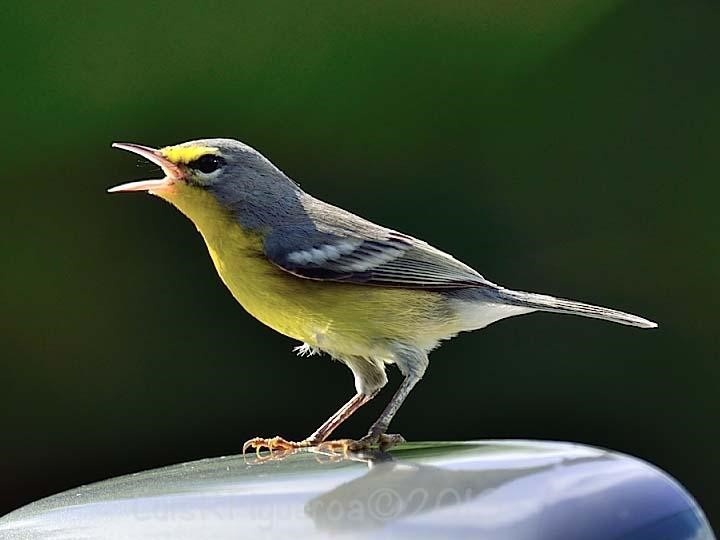
Adelaide’s Warbler, perched on rear-view mirror. (Humacao Nature Reserve, Puerto Rico; October 23, 2013.) © Luis R. Figueroa
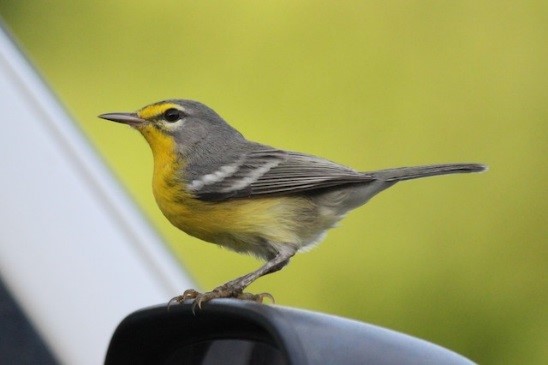
Adelaide’s Warbler, perched on rear-view mirror. (Ceiba, Puerto Rico; November 13, 2016.) © Charles Gates
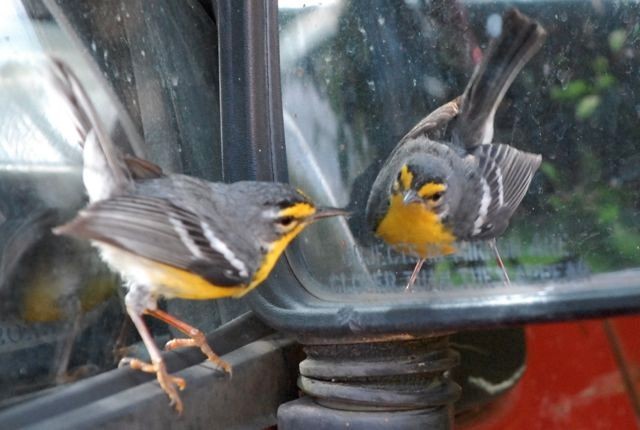
Adelaide’s Warbler: “Objects in Mirror Are Closer Than They Appear.” (Puerto Mosquito, Vieques; June 2, 2007.) © Daphne Gemmill
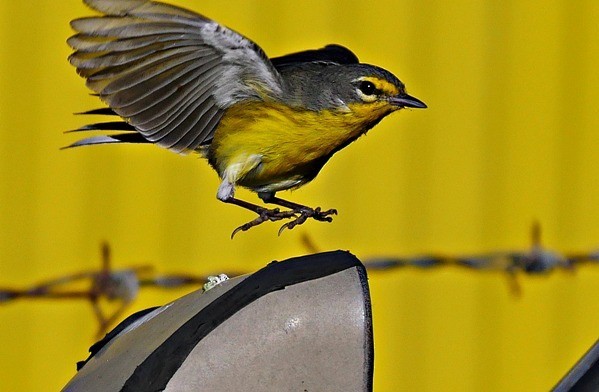
Adelaide’s Warbler, alighting on rear-view mirror. (La Parguera, Puerto Rico; April 12, 2017.) © Sadhu Govardhan
Cf. St. Lucia Warbler. St. Lucia and Adelaide’s Warblers are non-migratory species that occupy small, widely separated ranges, and are thus unlikely to overlap, but both have been known to island-hop. St. Lucia Warbler is a more vivid version of Adelaide’s, having essentially the same pattern, but with brighter colors and stronger contrasts. In particular, St. Lucia has more yellow in the face, accented by more extensive, crisper black markings. Under the eye, where Adelaide’s usually has a thin crescent that may be white or yellow, St. Lucia has a wide yellow crescent. St. Lucia’s song is much slower and more varied than Adelaide’s’ trill.
Cf. Barbuda Warbler. Barbuda Warbler, confined to the tiny island of Barbuda, strongly resembles female and immature Adelaide’s Warblers. Barbuda differs mainly in that it lacks distinct wingbars, and has slightly browner upperparts, especially on the back. Barbuda’s under-eye crescents are usually all-yellow, but can also be white; Adelaide’s’ are usually white, but can also be yellow. Barbuda’s song resembles that of Adelaide’s in vocal quality but has more complex phrasing.
Cf. Prairie Warbler. In most of its plumages, Prairie Warbler has much more yellow in the face than Adelaide’s, but immature female Prairies have gray cheeks, which makes them quite similar to Adelaide’s. All plumages of Adelaide’s differ from Prairie in having gray upperparts, white wingbars, and minimal streaking on the sides.
Notes
Monotypic species.
Formerly considered conspecific with Barbuda and St. Lucia Warblers.
References
Curson, J. 2018. Adelaide’s Warbler (Setophaga adelaidae). In Handbook of the Birds of the World Alive (J. del Hoyo, A. Elliott, J. Sargatal, D.A. Christie, and E. de Juana, eds.). Lynx Edicions, Barcelona. https://www.hbw.com/node/61480. (Accessed March 22, 2018.)
eBird. 2018. eBird: An online database of bird distribution and abundance. Cornell Lab of Ornithology, Ithaca, N.Y. http://www.ebird.org. (Accessed November 24, 2018.)
Gemmill, D. 2015. Birds of Vieques Island, Puerto Rico: Status, Abundance, and Conservation. Special issue of The Journal of Caribbean Ornithology, BirdsCaribbean, Scholarly & Specialized Publishing, Charlottesville, Virginia.
Raffaele, H., J. Wiley, O. Garrido, A. Keith, and J. Raffaele. 1998. A Guide to the Birds of the West Indies. Princeton University Press, Princeton, N.J.
Toms, J.D. 2010. Adelaide’s Warbler (Setophaga adelaidae), version 1.0. In Neotropical Birds Online (T.S. Schulenberg, ed.). Cornell Lab of Ornithology, Ithaca, N.Y. https://doi.org/10.2173/nb.adewar1.01.
